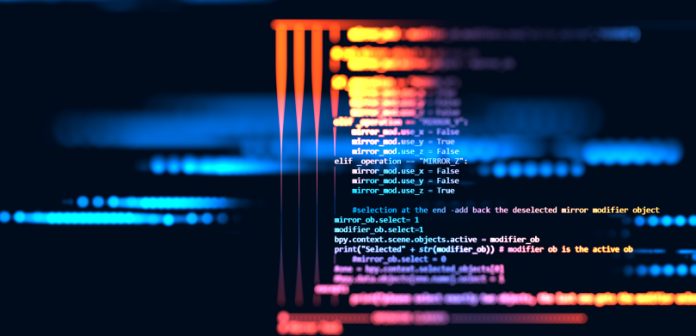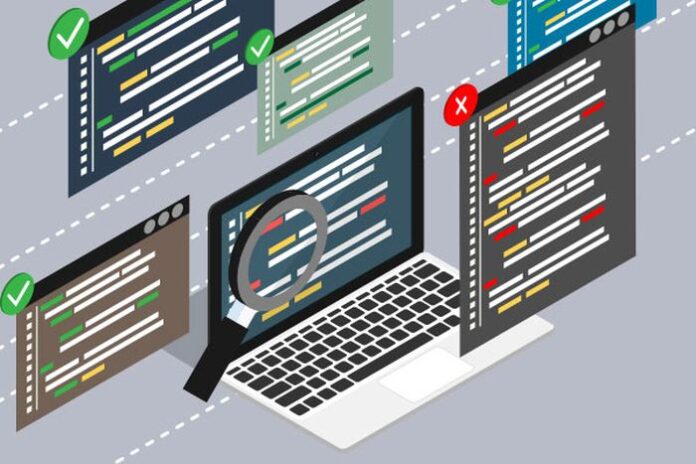Static code analysis is the process of checking code without executing it. The static analysis process consists of three phases. First, the analyzed code is divided into tokens – constants, identifiers, etc. The applications of static analysis are various. Today’s translators perform one form of static code analysis – syntax checking. Also, integrated development environments (IDEs) perform static code analysis. Using code refactoring or document formatting, a static analysis is performed that shapes the code according to its own rules. More advanced applications of static analysis include the detection or prediction of potential code errors and the detection of potential security vulnerabilities. Static analysis can be integrated and automated within the development environment itself (Eclipse), within the production (integration) environment (Jenkins) or a specialized tool can be used to display the analysis results in the best way (SonarQube). In any case, the most important thing is that the results of the static analysis and key program quality metrics are constantly monitored and measures to improve code quality are taken in a timely manner (error correction, introduction of guidelines for writing good code, refactoring, etc.).

Thus, static code analysis is a method of analyzing and evaluating search code without executing a program. Sometimes you will also hear the expression that static analysis is “white box testing”, which means that the source code is available to examiners, which is the opposite of black-box testing. Resources for static code analysis should ensure better code quality, although some IT experts argue that there may be problems with this type of testing, some of which are related to overly standardized debugging tools.
Static code analysis is very useful, so we can say it is necessary to get to the final product as well as to choose the ideal tools that will help you reach your goal. Advanced static analysis is performed using programs that provide insight into the lower-level code. Using these types of programs requires knowledge of assembly, and therefore advanced malware analysis methods have a steeper learning curve than basic analysis methods.
Advantages of static analysis

If we had to list the advantages of using static analysis, we would say that it is the fact that it finds the exact location of the vulnerability in the code, the ability to analyze the entire source code, and vulnerabilities that can be detected in the early stages of development. You can click here to learn more about static analysis and its benefits.
Speaking of advantages, we will mention the disadvantages – vulnerabilities resulting from the performance are rarely found and sometimes show false positive or negative results, which requires further analysis.
The need for static code analysis
Developers came to the conclusion 50 years ago that the method of checking the code is necessary if we aim to increase the quality of the program. However, initially, the source code was small so it was much easier to detect bugs. Today, a programmer has to spend hours at a computer until he notices it. A programmer goes through thousands of lines of code for hours and can happen to simply overlook some omission. Over time, developers began to use the computer to possibly find bugs. It is a special computer that is capable of processing a much larger amount of data than a standard one.
Unfortunately, the computer has a big flaw – it can’t think. It can count, it can perform comparison operations, but cannot conclude whether the code is correct as a programmer can. To minimize this shortcoming, developers have begun writing rules that warn of the most common errors that can occur. The rules allow the computer to find or alert you to potential or actual code errors and display them to the developer.
What are the tools for advanced static analysis?

Error correction programs
The first group consists of mnemonic error correction programs (debugger). These programs allow detailed monitoring of behavior programs. Here, the procedure provides insight into the actual course of the program that would otherwise be carried out too quickly.
Programs for translation into a higher programming language
The translation process takes place in the opposite direction, which leads to the source code of the program. The application of these programs is expressed in languages that have a virtual machine such as Java, C #, or Visual Basic because in this case, the source code retains a high level of readability.
Programs for generating machine code prints
This group includes all those programs in their original, binary form. Their task is to generate text files that contain program instructions written in machine language.
Programs for recording processes on disk
Programs that save the state of the active process to disk (process dump) the state of the active process being observed can be preserved for easier analysis and further processing. They are used when manually unpacking when the process malware is packaged by some modified packaging program.
Static analysis of the program is not based on data from specific executions, already immutable and secure source code data, which is why it is distinguished by impartiality. Independence from input data and environment enables efficient detection of borderline cases. The basic flaws of software metrics are caused by the close connection of their techniques with statistics as science and represent inaccuracy and reduced informativeness about practical use cases. The results are not experimental but show a theoretical prediction of behavior.

There are several types of static methods of analysis, some of which are symbolic execution, model validation, and abstract interpretation. These methods simulate the behavior of the program taking into account the input values, which increases the accuracy and informativeness. What can sometimes happen is that the specification remains incomplete due to the influence of real environmental parameters, whose specification is not fully known, which results in an error in the documentation and leads to weaknesses in the models created by these methods.
Final thoughts
The importance of static analysis is easier to understand if the cost of debugging at different stages of program development is taken into account. It has been observed that costs in the planning (defining requirements), analyzing and designing, and implementing phases increase minimally, while costs after that point increase exponentially.









